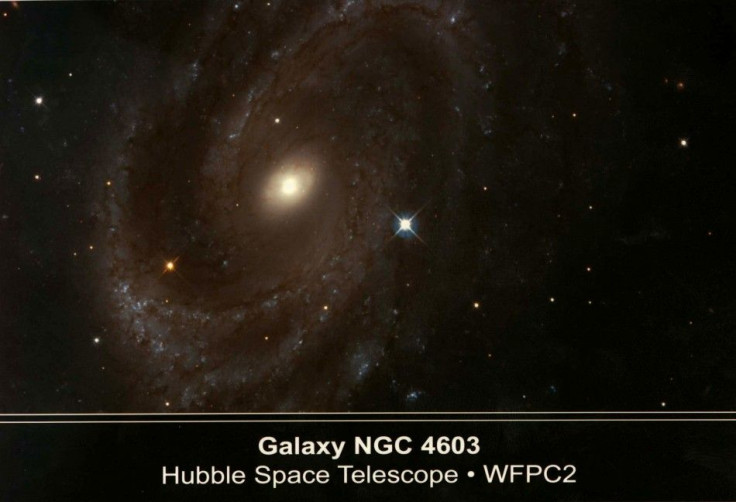New Spiral Galaxy Photo Captured By Hubble Telescope Helps Scientists Understand Black Holes

NASA released a photo of a stunning spiral galaxy captured by Hubble Space Telescope on Friday, May 3.
“These limelight-hogging celestial objects combine whirling, pinwheeling arms with scatterings of sparkling stars, glowing bursts of gas, and dark, weaving lanes of cosmic dust, creating truly awesome scenes,” the European Space Agency (ESA) described the image posted on NASA's website .
This Awesome Spiral Galaxy View from Hubble May Help Demystify Black Holes https://t.co/kU2GJwlG7v pic.twitter.com/m24B45Zqc5
— SPACE.com (@SPACEdotcom) May 6, 2019
The newly released image depicts a beautiful view of sparkling stars against an orange glowing background whirling toward the bright center along with comic clouds.
The spiral galaxy is called NGC 2903 and can be found 30 million light-years away in the constellation of Leo. A light-year is equivalent to 5.88 trillion miles, and it would take us 300 million hours to cover that distance with the current technology.
The photo was taken by the Hubble Space Telescope as it surveyed the central regions of roughly 145 nearby disk galaxies. And according to a new study, the Hubble image will be a big help in the continued research on black holes.
“This study aimed to help astronomers better understand the relationship between the black holes that lurk at the cores of galaxies like these, and the rugby-ball-shaped bulge of stars, gas and dust at the galaxy’s center,” a NASA report read.
NASA scientists are optimistic that through this study, they will gain a better understanding of the large black holes located at the center of galaxies.
The Hubble Space Telescope is a collaborative effort of NASA and ESA. As the first space telescope, it was launched on April 24, 1990 and remains in operation today.
Despite its 29 years of existence, the Hubble continues making breakthrough discoveries that revolutionize nearly all fields of astronomy and astrophysics.
© Copyright IBTimes 2025. All rights reserved.





















